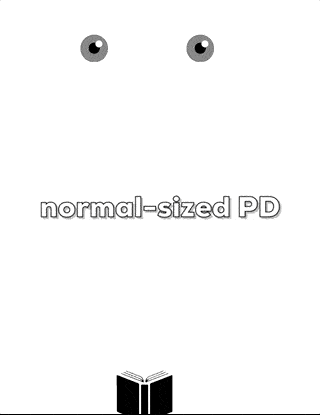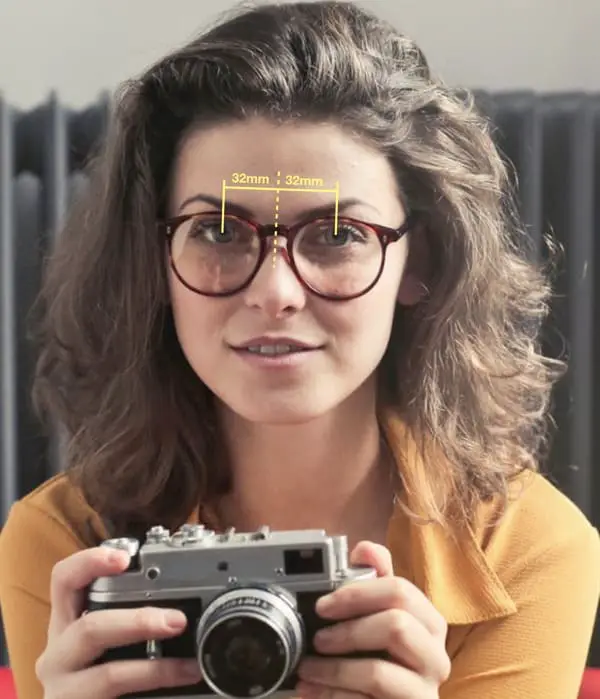Standard progressive lenses are manufactured for standardized parameters like the distance between your eyes and how the glasses sit in your face. Premium progressive lenses can be manufactured individually for you. That can result in bigger sharper areas and a more relaxed vision.

But before we dive into the differences between standard progressive glasses and premium progressive glasses what does premium actually mean? Is it tied to a specific set of optical parameters that can be changed to get you the very best vision? No. Seriously it is not a trademark or so. Premium just sounds good in the first place. So just ask what you get exactly. Because if you are visiting two different shops the experience can vary from the time that is spent with you and in the measurement and the consulting of the progressive lenses.
You know we only provide premium lenses
This was the answer from a salesperson who presented his portfolio of progressive lenses. I just aksed “were are the differences” and frankly spoken i got no answer.
The Differences in Standard and Premium Progressive Lenses:
| Parameters that could be considered | Standard Pogressive Glasses | Premium progressive glasses (individually manufactured) |
| Pupilar distance | Yes | Yes |
| Hight of Pupils in the frame | Yes | Yes |
| Pupilar distance and individual place of the reading area to maximize reading space | No | Yes |
| Pantoscopic tilt | No | Yes |
| Refracted vertex distance & fitted vertex distance | No | Yes |
| Frame data (hight, form, length etc) | No | Yes |
| The angle between the lenses (wrap angle) | No | Yes |
| Different astigmatisms possible in the far and near viewing areas | No | Yes |
If you read a no in the table that just means the parameter can not be changed and is therefore set to an average value.
The big question is: Where is the difference for you. Down below I give you 3 examples of people to give some understanding of what these parameters can mean to you in your progressive glasses.
When Standard Progressive Lenses Are a Bad Choice (Example Simon)
Simon is a pretty guy with a big pupilar distance of 36mm in both eyes. He decides to wear a frame that cannot be changed in the pantoscopic tilt. The temples just are not made for such an adjustment and His high sitting ears producing a higher pantoscopic tilt of 14°. The fitted Vertex distance is 15mm. He is farsighted with +6,0dpt in both eyes.

There was a bunch of info here. Let´s digest the info in a table and compare Simon´s real-world fitting distances and angles to the average Values.
| Parameters That Should Be Considered in Simons Case | Real-World Simons Parameters | Standard Progressive Glasses Parameters | Premium Progressive Glasses Parameters |
| Pupilar Distance and Individual Place of the Reading Area to Maximize Reading Space | 36mm | 32mm | 36mm |
| Pantoscopic Tilt | 14° | 8° | 14° |
| Refracted Vertex Distance & Fitted Vertex Distance | 15mm | 12mm | 15mm |
The differences sound not that much in the first place to most people. Since it is just a few millimeters here and a few degrees there. But with this easy explanation, you will understand why Simon could not leave the store if he chose the standard progressive glasses.

In this short clip are two pairs of eyes being shown. They are looking at a book. The colored dots mark the areas where the eyes usually read if they are a little bit more apart (green dots) or a little bit more narrow positioned (yellow dots). Look closely at the movements and where the colored dots are. If they do not sit directly where they are supposed to be you can´t properly read. Because only one eye at a time can look through the optimal reading area.
Here you can see in the short clip people as Simon with a bigger-sized pupilar distance is looking through other areas compared to people with a normal-sized pupilar distance. They also tend to have more convergence of both eyes in the same reading distance.
In short people with a bigger PD are positioning their eyes at another angle compared to a smaller PD to read the same book. This is important to know. Because premium progressive lenses take this into account compared to standard progressive lenses.
Should You Choose Standard or Premium Progressive Glasses with a Bigger Pupilar Distance?
I highly recommend premium progressive glasses in this case. Just see for yourself how the design of the lenses defers from one another to fit Simons’s needs.

The clip shows you a standard progressive lens in combination with a wide pupilar distance. Simon, just could not read. The grey areas simulate blurry fields.
That problems arise because of the fixed reading area which can not be customized to the reading position of his wide distance between his eyes. (In this pictures blue symbolizes the prescription for the distance, green for PC Work and yellow and red for reading)

Here in comparison to the above clip, you can see a premium progressive lens in combination with Simons’s big pupilar distance.
With the oblique fitted sharp zones, Simon can suddenly read easily just by holding his book or smartphone in front of him. But this can only achieved in his case if this individual adjustment can be manufactured in his lens type. Remember: Premium does not equal Premium.
As you saw in the table the second parameter that should be considered and wasn´t on point was the pantoscopic tilt. If the tilt is too high usually the vision gets compromised. You can experience this probably through your own glasses. just look outside the window and tilt your glasses and see for yourself. The lower the prescription the lower the effect.
The last parameter was his farsightedness. He had actually +6,00 in a measured vortex of 10mm. But his new frame sits a little more away from his eyes. Now it should be fitted to 15mm. That means he actually needed a slightly less powerful lens (5,75dpt). WIth standard progressive glasses, this would not be considered and he would go outside and experience a slight blurriness. With individually made premium progressive lenses this would not happen.
A Case in Which Standard Progressive Lenses Are as Good as Individually Manufactured Lenses (Example Natalie)

Sometimes it happens. A customer comes into the shop with an absolute symmetrical face that matches nearly all the already mentioned parameters with average values. In such a case it would not be beneficial to optimize or customize something in the lenses. Because what should be optimized?
In our example here Natalie would not experience any difference from cheaper standard progressive glasses to premium glasses. If she chooses a frame that is not out of the range of the standard distances and angles. The standard lenses will work just fine.
One word of caution though. There are differences in standardized lenses. For example, the transitions from the sharp areas to the blurred ones can be harder or softer, depending on the lens and manufacturer of choice.
So we hope we could give you the information you have not access to before. And now if you are not sure about what lens to choose ask your professional if there are satisfaction guarantees. Of course, before you buy it.
It would be great to hear about your experiences with different progressive glasses. Share them below. If you have a friend who can benefit from this article please share it.
As always it was a pleasure for me to write about the stuff I love and do daily.
Best regards Mike

